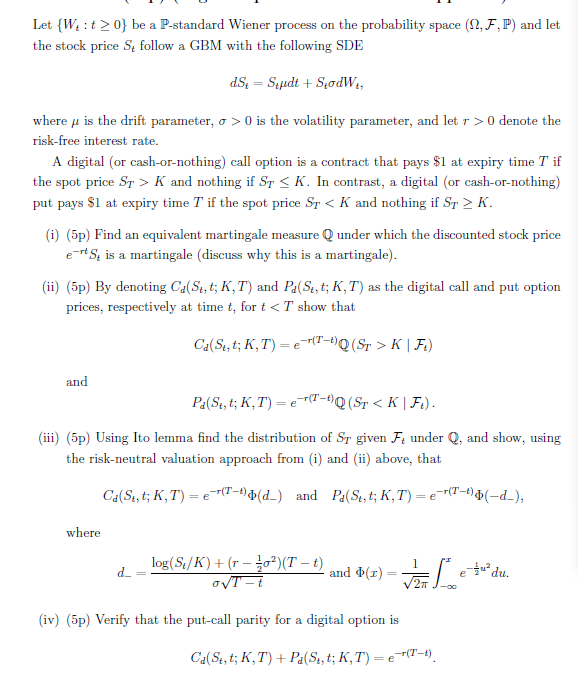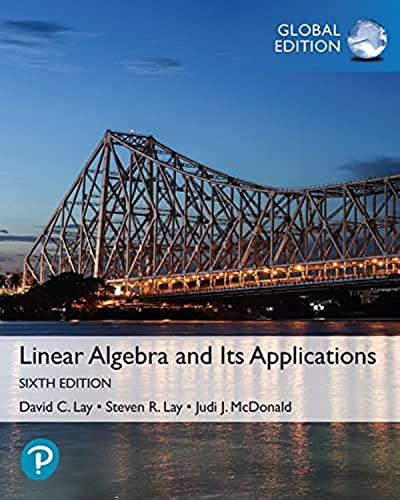Answered step by step
Verified Expert Solution
Question
1 Approved Answer
Let {Wt>0} be a P-standard Wiener process on the probability space (Q, F, P) and let the stock price St follow a GBM with

Let {Wt>0} be a P-standard Wiener process on the probability space (Q, F, P) and let the stock price St follow a GBM with the following SDE dS = Sdt + SdWt, where is the drift parameter, > 0 is the volatility parameter, and let r >0 denote the risk-free interest rate. A digital (or cash-or-nothing) call option is a contract that pays $1 at expiry time T if the spot price ST > K and nothing if ST < K. In contrast, a digital (or cash-or-nothing) put pays $1 at expiry time T if the spot price ST < K and nothing if ST > K. (i) (5p) Find an equivalent martingale measure Q under which the discounted stock price etS is a martingale (discuss why this is a martingale). (ii) (5p) By denoting Ca(S, t; K,T) and Pd(St,t; K,T) as the digital call and put option prices, respectively at time t, for t K | Ft) =e P(S, t; K,T) = e(Tt) Q (ST < K | Ft) . (iii) (5p) Using Ito lemma find the distribution of ST given F under Q, and show, using the risk-neutral valuation approach from (i) and (ii) above, that where Ca(St,t; K,T) = (T-)(d) and Pa(St, t; K,T) = e(T-) (-d_), d_ e log(S/K)+(r)(T t) oT-t =e 1 and (1) e 2 du. = (iv) (5p) Verify that the put-call parity for a digital option is Ca(St, t; K,T)+P(S, t; K,T) = e(T-1).
Step by Step Solution
There are 3 Steps involved in it
Step: 1

Get Instant Access to Expert-Tailored Solutions
See step-by-step solutions with expert insights and AI powered tools for academic success
Step: 2

Step: 3

Ace Your Homework with AI
Get the answers you need in no time with our AI-driven, step-by-step assistance
Get Started


